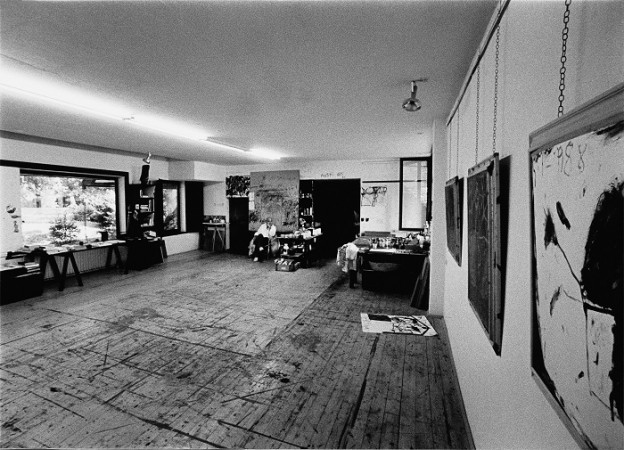The Jakopič Gallery is presenting Tihomir Pinter, a master of black-and-white analogue photography
Tihomir Pinter, a master of black-and-white analogue photography, is presented at the retrospective exhibition "The Chemistry of the Image", opening on Tuesday, 28 November 2017, 7 p.m., in the Jakopič Gallery. A general knowledge of his oeuvre is often limited to the portraits of artists, but a comprehensive overview of the photographer's archive unveils interesting chapters and the development of his auteurial poetics through almost five decades of photography.

Tihomir Pinter was born on 19 January 1938 in Bjelovar, Croatia, and attended primary and grammar school there. From 1954 to 1958, he attended the Military Medical College in Ljubljana. Both his studies and his career as a pharmacist took him to the capitals of various republics of the former Yugoslavia: from Ljubljana to Sarajevo, from Zagreb to Belgrade. He was awarded a doctorate in food chemistry from the University of Zagreb (Faculty of Pharmacy and Biochemistry) in 1975. Wherever he lived, he devoted much of his spare time to photography and was an active member of a number of photo clubs. He kept in touch with developments in the field of photography, participating not only in group exhibitions but also having several of his own solo shows. Between 1969 and 1981, he was regularly ranked among the ten most successful exhibition photographers in Slovenia and the then-Yugoslavia.
In 1958, he started working in a military pharmacy in Sarajevo, where he also became a member of the Sarajevo Photo Club. Although this period can be considered Pinter’s formative years, it was only in Zagreb, where, in 1960, he enrolled at the Faculty of Pharmacy and Biochemistry and became a member of the renowned photo club, that he turned into an artist who then started exhibiting regularly in 1964. Pinter’s first photographs are dated to 1961. The most important among them, called Brez pogreba (No Burial), is distinguished by the contrast between the profound darkness and the flatness of the white surface, which was achieved using what is termed ‘photographics’.
Pinter refused to assume the role of arranger: instead, it was through being able to see what was prearranged that he wanted to achieve all his goals. When a negative offered an opportunity for a condensed view abstracted to its very core, Pinter never hesitated to crop it. As early as 1965, he started to transcend the concept of street photography by drawing on the then very topical ideas of abstract art.
One of Pinter’s key series of photographs depicting ironworks began in 1966, as part of the preparations for the first exhibition of photographs called Čelik i nafta (Steel and Oil) in Sisak. In the years to follow, Pinter visited almost all ironworks of the former Yugoslavia. Although the photographer considers himself a realist whose point of departure was nothing but reality, it was the ironworks that led him to abstraction. Pinter then embarked on a series called Detajli (Details), which was showcased in his first solo exhibition, in May 1970. That same year, the International Federation of Photographic Art (FIAP) awarded him their AFIAP (Artiste FIAP) distinction, and this was followed by the EFIAP (Excellence FIAP) distinction in 1975.
Pinter joined the food science laboratory at the Ljubljana Military Hospital in 1970. At the same time, he started visiting renowned Slovenian artists in their studios, creating a vast series of portraits with which Pinter made his name in Slovenia and became recognised as a photographer. The year 1990 saw his solo exhibition at the Museum of Modern Art in Ljubljana. Pinter consistently allows enough time to create his portraits, thereby credibly capturing both the subject’s physical appearance and their current mood; at the same time, the photographer allows the viewer to see the sitter’s studio in the background. These ‘still lifes’ eventually attained independence and acquired their own autonomous expressive power.
In 1967, Pinter embraced the concept that it was the grain in a photograph that created its form and that it was the grain, more than anything else, that made a photograph a true photograph. What mattered to him was the ‘sharpness of the grain’, its clarity and crispness. The photographer himself says that what exactly we see in the photographs exhibited matters. He believes it is imperative for us to notice the grains of silver in them, but however this takes time. Tihomir Pinter has created his entire oeuvre using only natural light, i.e. without the use of either flash or artificial light. He has created all his photographs in his own darkroom, using the silver gelatin process. The crucial point in the creation of his analogue black and white prints is the darkroom work; as regards the process of seeing – choosing a motif – the quest for the visual quality of the world surrounding him is of utmost importance.